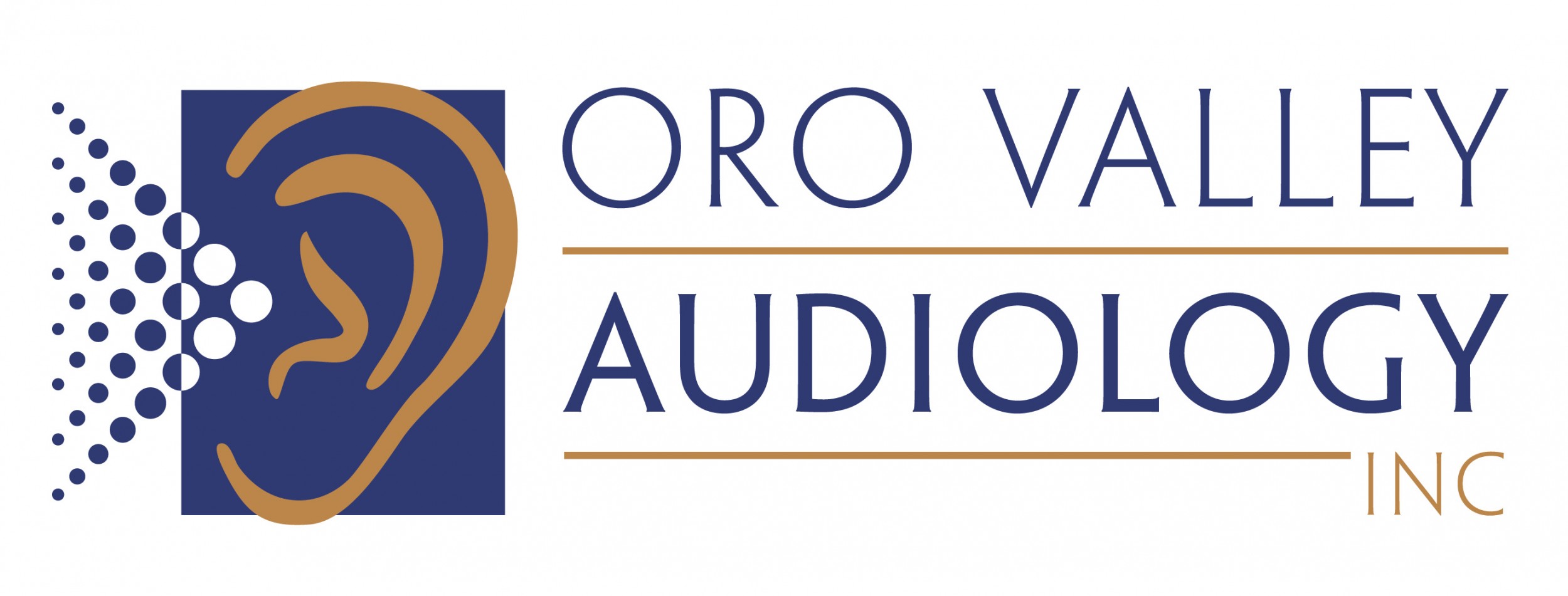
Hearing aids in their simplest form pick up sound through a microphone, then digitally process it into the ear through a speaker, or what we call a receiver to help the wearer with their hearing loss. All hearing aids have a digital chip and a set algorithm or prescription to change the sound going into the ear. Most hearing aids that are fit by an Audiologist have complex prescriptions that are determined and set during the hearing exam.
Different Styles of Hearing Aids
Hearing aids come in many shapes and forms.
Receiver in the ear (RITE) or Receiver in the Canal (RIC), has a behind the ear type with a wire connecting the receiver (or speaker) directly in the canal. Another style that has a part behind the ear (BTE) will almost always have a custom earmold that sits in the ear canal and connected by a tube that needs to be replaced every 3-12 months.
Custom styles, which take an impression of the individual’s ear, are completely custom are In The Ear (ITE), Half shell, In the Canal (ITC), Completely in the Canal (CIC) and Invisible in the Canal (IIC) from largest to smallest.
The type of hearing loss and how much gain is needed at different frequencies are needed to determine which fit is best for each person.
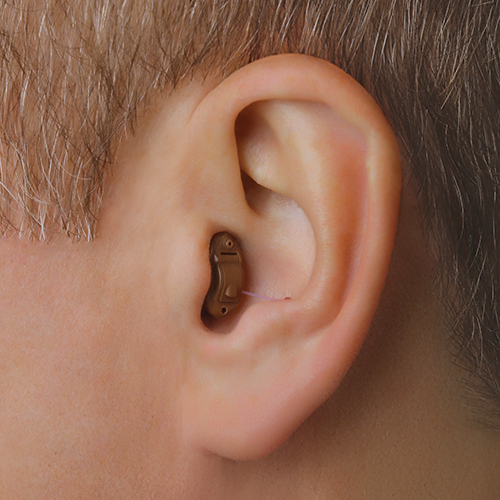
Completely in the canal (CIC)
Only the tiny removal handle of the hearing aid shows outside of the ear canal. The fit is dictated on how large the ear canal is to fit all of the parts of the hearing aid inside the shell. Ideal for a flat sensorineural hearing loss, meaning there is a low frequency hearing loss as well as in the high frequencies. This type of fit is more susceptible to wax related problems.
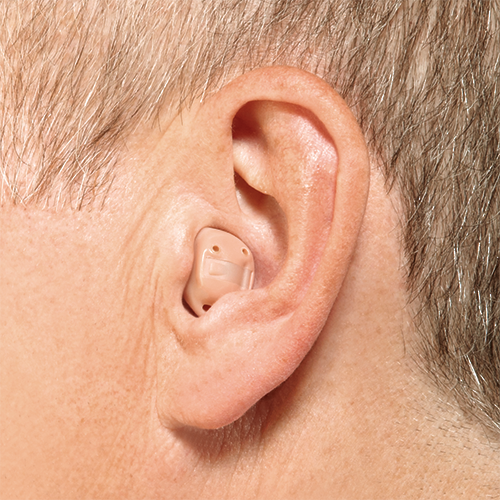
In the canal (ITC)
In the Canal hearing aids are custom built from the impression your Audiologist has taken of your ear canal. There is a small portion of the faceplate that is seen out of the canal along with the battery door, with the advance of technology there can be ear to ear wireless communication and directional microphones in this size of hearing aid.
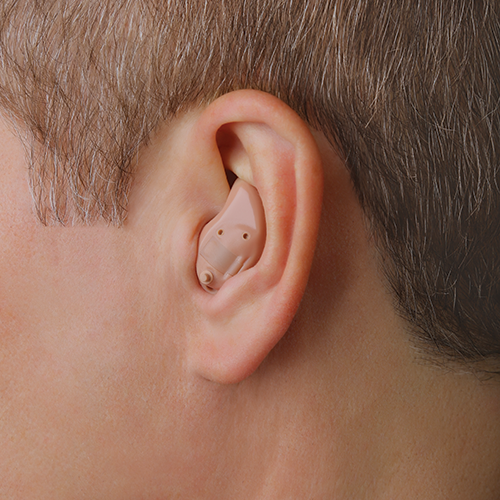
In the ear (ITE)
Custom hearing aid that fits within the outer portion of the ear.An In the Ear hearing aid can come in two sizes, a full shell and a half-shell product. The full shell encompasses the entire bowl of the outer ear and a half-shell is just the lower portion (just bigger than an ITC). More severe losses can be fit with this type of custom made product. Since the aids are bigger they can include many additional features.
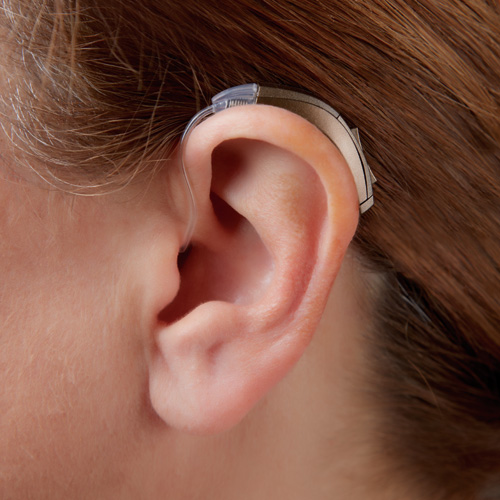
Behind the ear (BTE)
A Behind the Ear hearing aid uses a unit that literally sits behind the ear. The BTE unit is custom programmed to the individual. This fitting is appropriate for the most profound hearing losses. This type of hearing aid is the most flexible in the wide range of hearing loss it can fit. It has an option for a large battery, a telecoil, directional microphones, and options for volume control and program button.
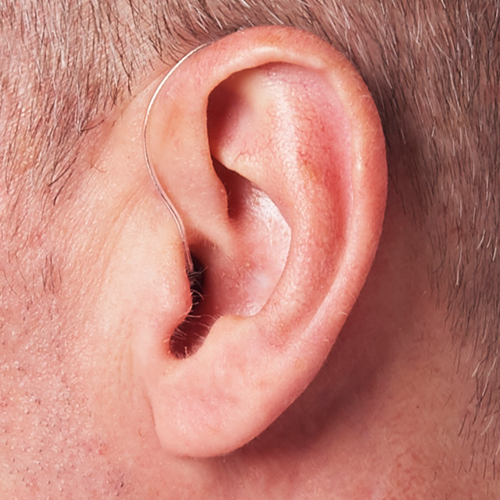
Receiver in canal (RIC) or receiver in the ear (RITE)
These small, discreet and quick to fit aids are perfect for many first-time hearing aid wearers. This type of hearing aid works well for high frequency hearing losses while controlling feedback (that high pitch squeal). Your audiologist will choose the best fit between domes and custom fit based off of your hearing loss, ear canal size and lifestyle.
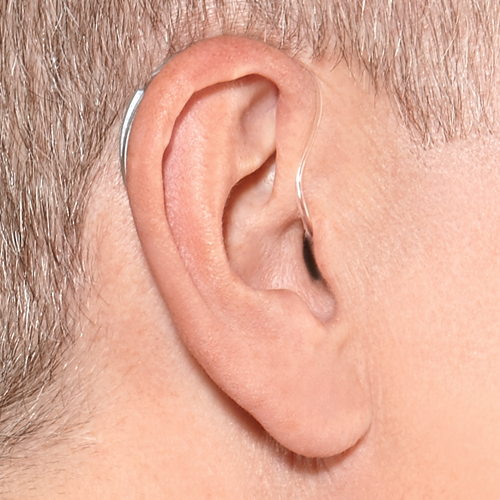
Open Fit
Open fit is a Behind the ear (BTE) hearing aid with a thin tube used to deliver the sound into the canal. The diameter of the tubing changes how specific frequencies are delivered into the ear, the smaller the tube the more boost to high pitches. The ear canal is also left as open as possible to let low frequencies leak back out. This fit is specifically for hearing in the normal limits in the low pitches and hearing loss in the moderate to severe range in the high frequencies.
Additional Hearing Aid Features
Remote Microphones
Hearing aids that are able to wirelessly connect to other devices can use a remote microphone which is the best option to hear a specific person in noise. Since the microphone can be used close to the person’s mouth (think of a lapel mic on a TV Newscaster) and transmit directly to the hearing aid user. It takes away all of the space between listener and speaker and should be used by more people who have a lot of trouble hearing in noise.
Directional Microphones
There are two microphones in the hearing aid to better tell the circuit what is coming from the front, side and behind the listener. It does not get rid of background noise but rather focuses in front (or where the individual chooses like a taxi driver may want to focus behind) of the listener for optimal speech understanding.
Telecoils
A telecoil is the most affordable way to have a group of people hear through an amplified system. The room must be “looped” with a special copper coil and sent out in the room by a magnetic signal which then can be picked up through the hearing aid on the “telecoil” setting. The telecoil does affect the size of the hearing aid but should be in most fittings as more places are being looped. In Arizona the Senate and House floors are looped for members and constituents to hear better. The Marana Town council room is also looped along with The Loft Cinema Movie theaters and many churches around town.
Direct to Smartphone
This has been a game changer with hearing aid fittings. Phone calls, music, audiobooks and videos can be heard through both ears and amplified specifically for your hearing loss. Streaming does affect the battery life though and should be considered.
Rechargeable Batteries
Rechargeable is company specific and is only available in RITE, RIC, BTE and Open fits only, none in the custom fit categories. Depending on the battery used the life on one charge is between 13 to 24 hours per charge. The factors that will affect is how much drain is on the battery, such as streaming and will affect how long between charges.
Volume Control
There can be a single button or a rocker switch to increase or decrease the volume. This button or switch can also be used to change programs. The choice is determined by the company and the size of the device.
Choosing the right hearing aids makes all the difference. We offer the latest in hearing aid technology and use real ear measurements so you know what devices will fit you best, work for your hearing loss, and allow you to maintain the lifestyle you enjoy. You can also choose a package that will include more comprehensive care for your hearing aids, like cleanings, battery replacement, follow-up appointments, and more.
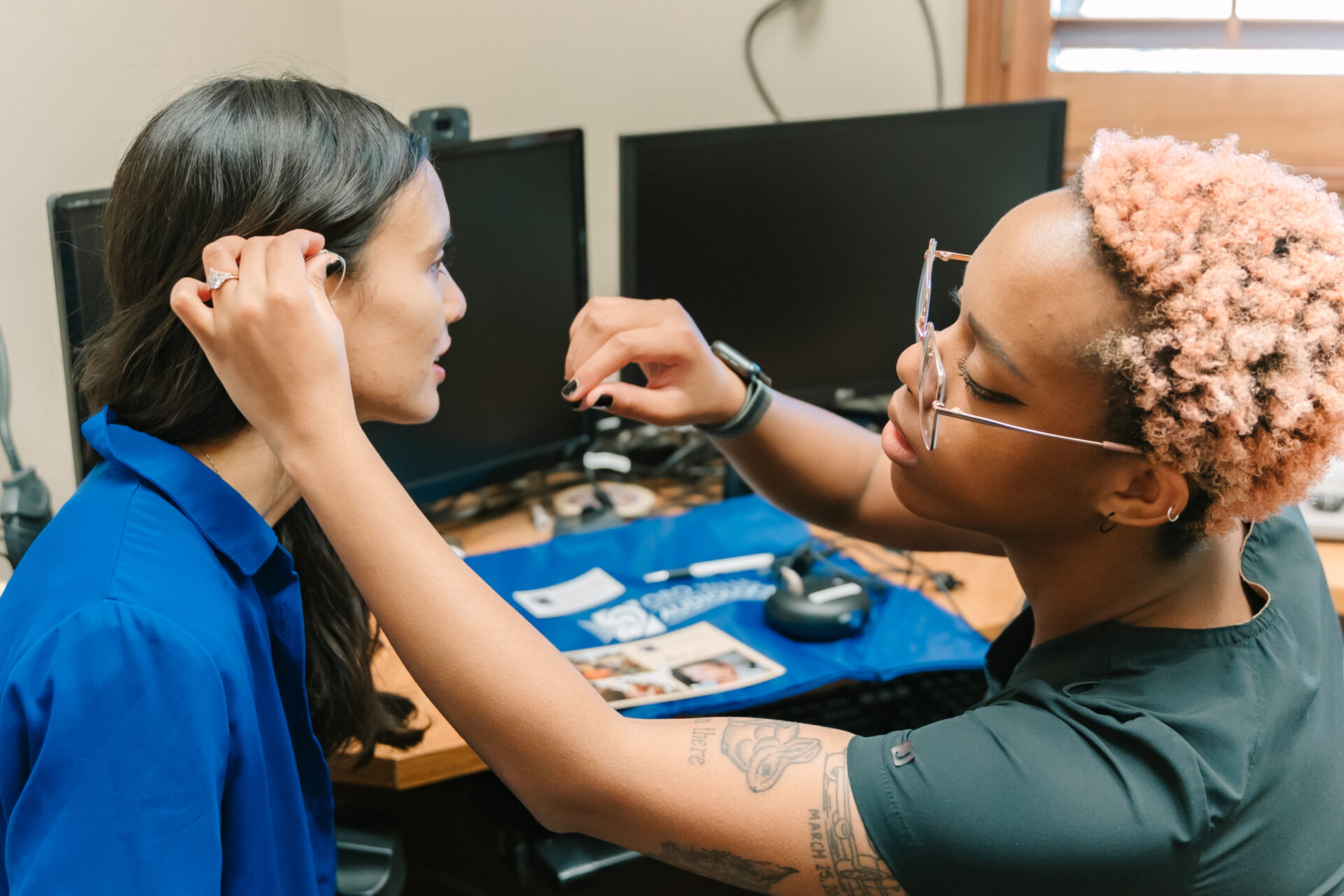
Ear Molds & Ear Plugs
Noise exposure is one of the leading causes of hearing loss. Whether it’s sudden or over a long period of time, keeping your ears protected from loud noises can keep hearing loss from worsening or occurring in the first place.
Instead of buying generic, one-size-fits-most approach, we can make sure your ear molds fit your ears perfectly. We can design and fit ear molds or ear plugs for exactly what you need.

Ear Protection for Musicians
Musicians suffer not just from hearing loss but also a ringing in their ears and various pitch-perception problems. Depending on the quality of the fit and length of the ear canal, a custom fit in-ear monitor will generally provide somewhere between 25 and 35 dB of noise reduction.
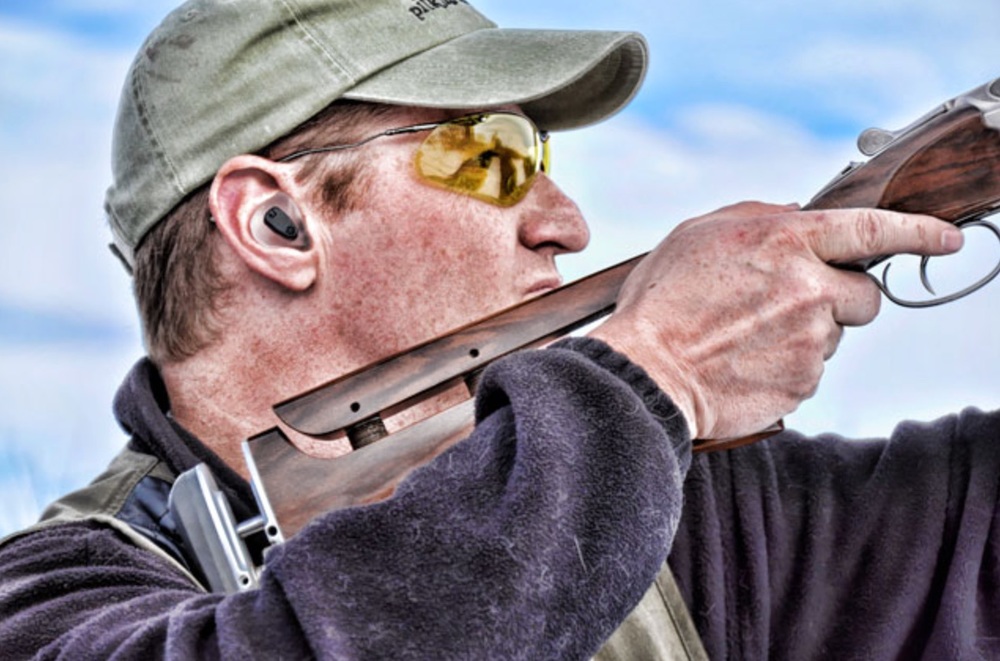
Ear Protection for Hunters
A gunshot can create 140-190 dB, depending on the weapon. Anything over 85 dB leaves you vulnerable to hearing loss. Hunting plugs use a filter which instantaneously closes when damaging noise levels are reached.
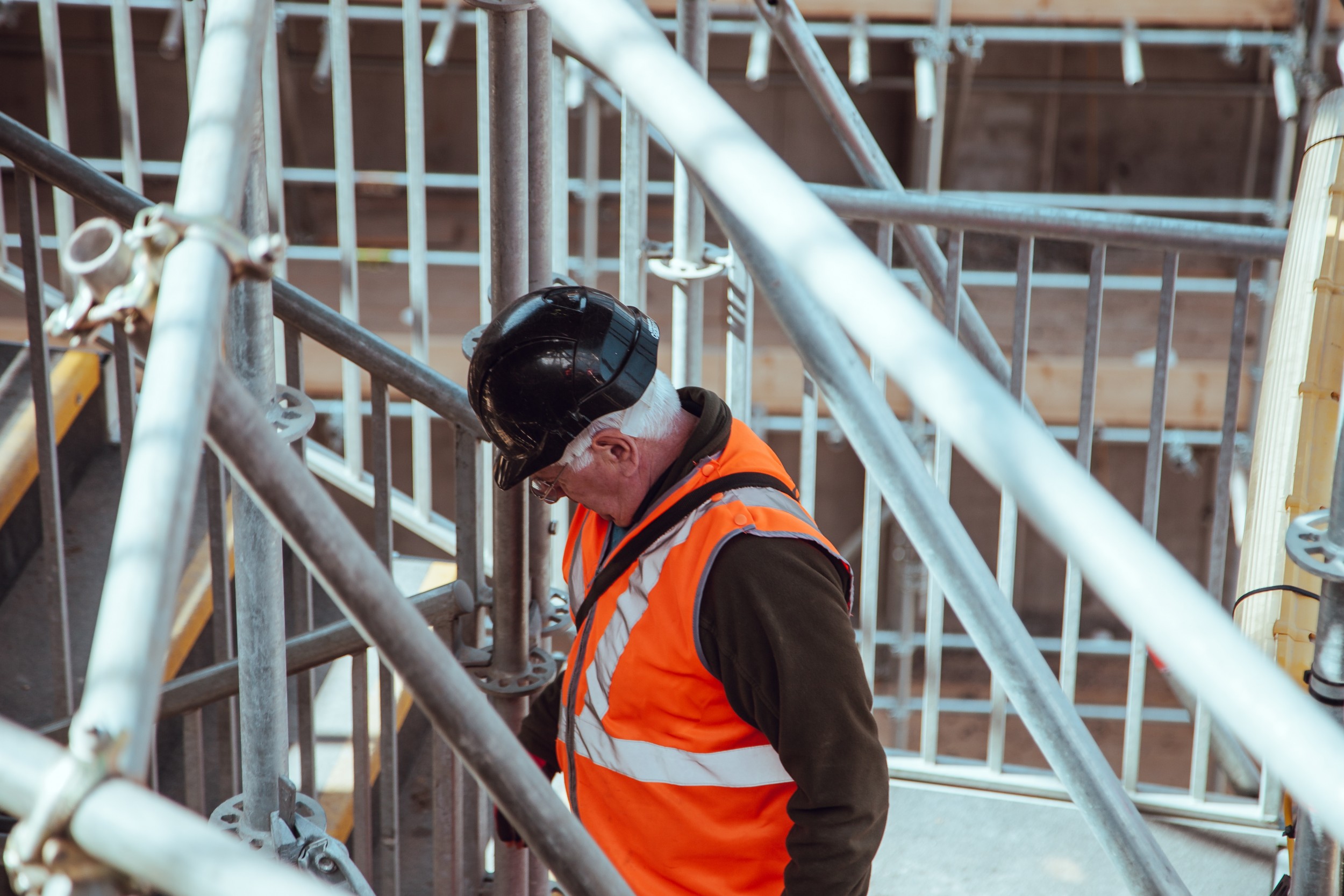
Ear Protection for Construction Workers
There are over 39 million people in the workforce right now who experience hearing loss. Make sure you are protected on the job.
Frequently Asked Questions
What do I need to know before I purchase hearing aids in Tucson AZ?
The first is your hearing loss. A complete diagnostic test by an audiologist is extremely important on fitting the appropriate hearing aid. A test that should be done is a “hearing in noise” test to better predict how you do in noise and if a remote microphone is recommended as well. Also know that being fit with hearing aids is a journey, not a destination. Much of the pricing is on the service involved in the journey. We want to take care of your hearing needs from the moment we meet you. We need to know what your health conditions are, what medications you use and what you like to do for fun! All of this helps us take you as the person forefront in the fitting process.
Why should I be fitted by an audiologist?
As an Audiologist we take the whole health into consideration along your hearing healthcare. We want to know your health history, your medication, what makes you happy so we can help you sustain your lifestyle. We want to have a baseline when your hearing is good and help you conserve your good hearing with hearing protection. But also be there if there is a change in your hearing and make sure you receive the best help possible and quickly as possible. We want to be able to educate you and help you learn about what can be damaging to your hearing because once it is lost it can almost never be regained. We want you to have better brain health, better communication with your loved ones and wonderful connections with new people and situations.
What is the best hearing aid on the market today?
There are 5 major manufacturers for hearing aids who also make the majority of the parts that smaller companies purchase from to make their own aids. Each company makes very high-quality hearing aids that have their own prescription to fit for particular hearing losses. We would recommend that individuals are fit for their lifestyle and physical needs (custom earpiece or rechargeable batteries) The relationship with your Doctor of Audiology is more important to make sure each person’s needs are met than the company the hearing aid is made from.
What is the best hearing aid on the market in 2022?
Hearing aids that stream to smart phones have the most flexibility and options available for individuals. What will continue to improve is the communication with the phone. In 2019 a challenge has been keeping the hearing aids connected to the smart phone with platform upgrades has been a bit of a challenge (as is any peripheral device with a smartphone). This and health monitoring included in the hearing aid will be what’s hot for 2020.
What is the average cost of hearing aids?
The first question to ask is what is important to the consumer, the product only or the product with service. In our years of working with hearing aids the service is more important than the product. Without service, hearing aids run about $2,000 to $5,000 per set depending on the technology. In our office service packages run $400, $600 or $800 for 1-, 2- or 3-year service packages. We want to make sure each person has the service package that matches their needs and is discussed at length during your consultation.
